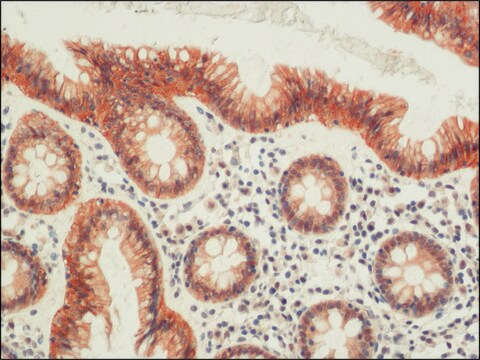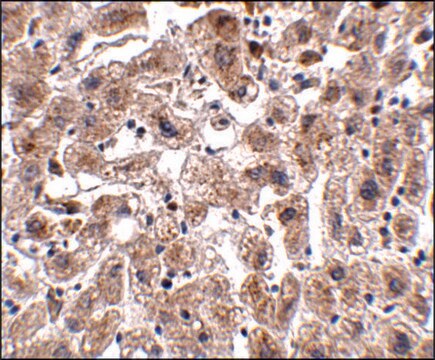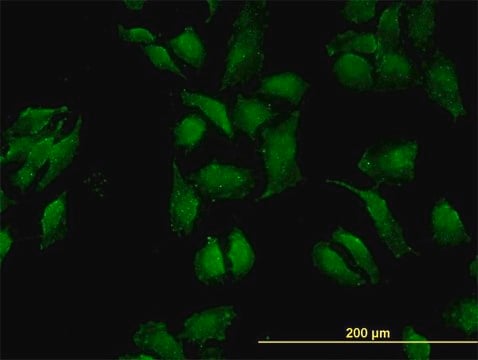AB2272
Anti-ZO-1 Antibody
from rabbit, purified by affinity chromatography
Sinônimo(s):
tight junction protein 1, zonula occludens 1 protein, Zona occludens protein 1, Zonula occludens protein 1, zona occludens 1
About This Item
Produtos recomendados
fonte biológica
rabbit
Nível de qualidade
forma do anticorpo
affinity isolated antibody
tipo de produto de anticorpo
primary antibodies
clone
polyclonal
purificado por
affinity chromatography
reatividade de espécies
human
reatividade da espécie (prevista por homologia)
mouse (based on 100% sequence homology)
embalagem
antibody small pack of 25 μg
técnica(s)
immunohistochemistry: suitable (paraffin)
western blot: suitable
nº de adesão NCBI
nº de adesão UniProt
Condições de expedição
ambient
wet ice
temperatura de armazenamento
2-8°C
modificação pós-traducional do alvo
unmodified
Informações sobre genes
human ... TJP1(7082)
Descrição geral
Especificidade
Imunogênio
Aplicação
Neuroscience
Neuronal & Glial Markers
Qualidade
Western Blot Analysis: 0.1 µg/mL of this antibody detected ZO-1 on 10 µg of HepG2 cell lysate.
Descrição-alvo
forma física
Armazenamento e estabilidade
Nota de análise
HepG2 cell lysate
Outras notas
Exoneração de responsabilidade
Not finding the right product?
Try our Ferramenta de seleção de produtos.
recomendado
Código de classe de armazenamento
12 - Non Combustible Liquids
Classe de risco de água (WGK)
WGK 1
Ponto de fulgor (°F)
Not applicable
Ponto de fulgor (°C)
Not applicable
Certificados de análise (COA)
Busque Certificados de análise (COA) digitando o Número do Lote do produto. Os números de lote e remessa podem ser encontrados no rótulo de um produto após a palavra “Lot” ou “Batch”.
Já possui este produto?
Encontre a documentação dos produtos que você adquiriu recentemente na biblioteca de documentos.
Os clientes também visualizaram
Artigos
16HBE14o- human bronchial epithelial cells used to model respiratory epithelium for the research of cystic fibrosis, viral pulmonary pathology (SARS-CoV), asthma, COPD, effects of smoking and air pollution. See over 5k publications.
Nossa equipe de cientistas tem experiência em todas as áreas de pesquisa, incluindo Life Sciences, ciência de materiais, síntese química, cromatografia, química analítica e muitas outras.
Entre em contato com a assistência técnica















